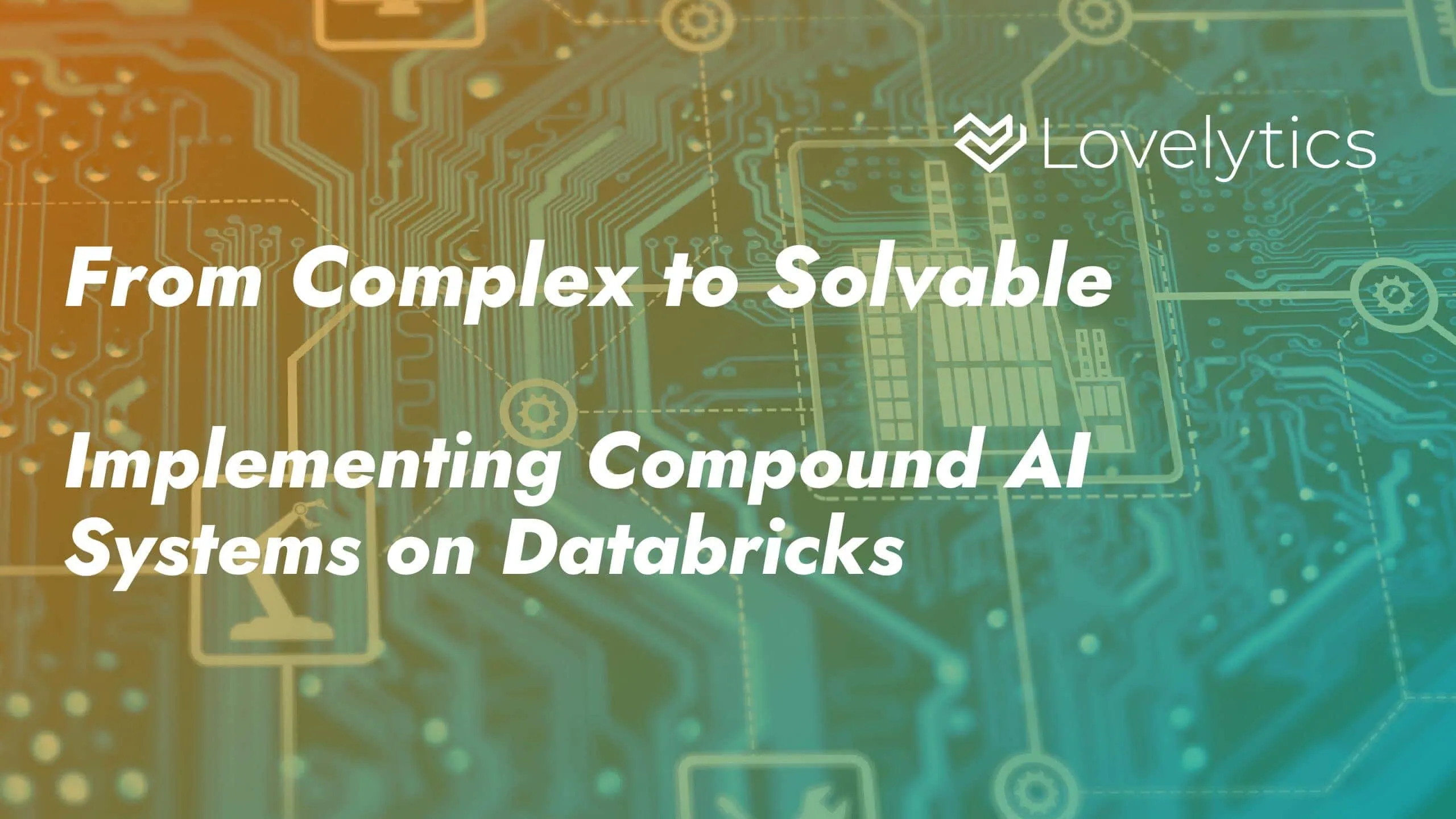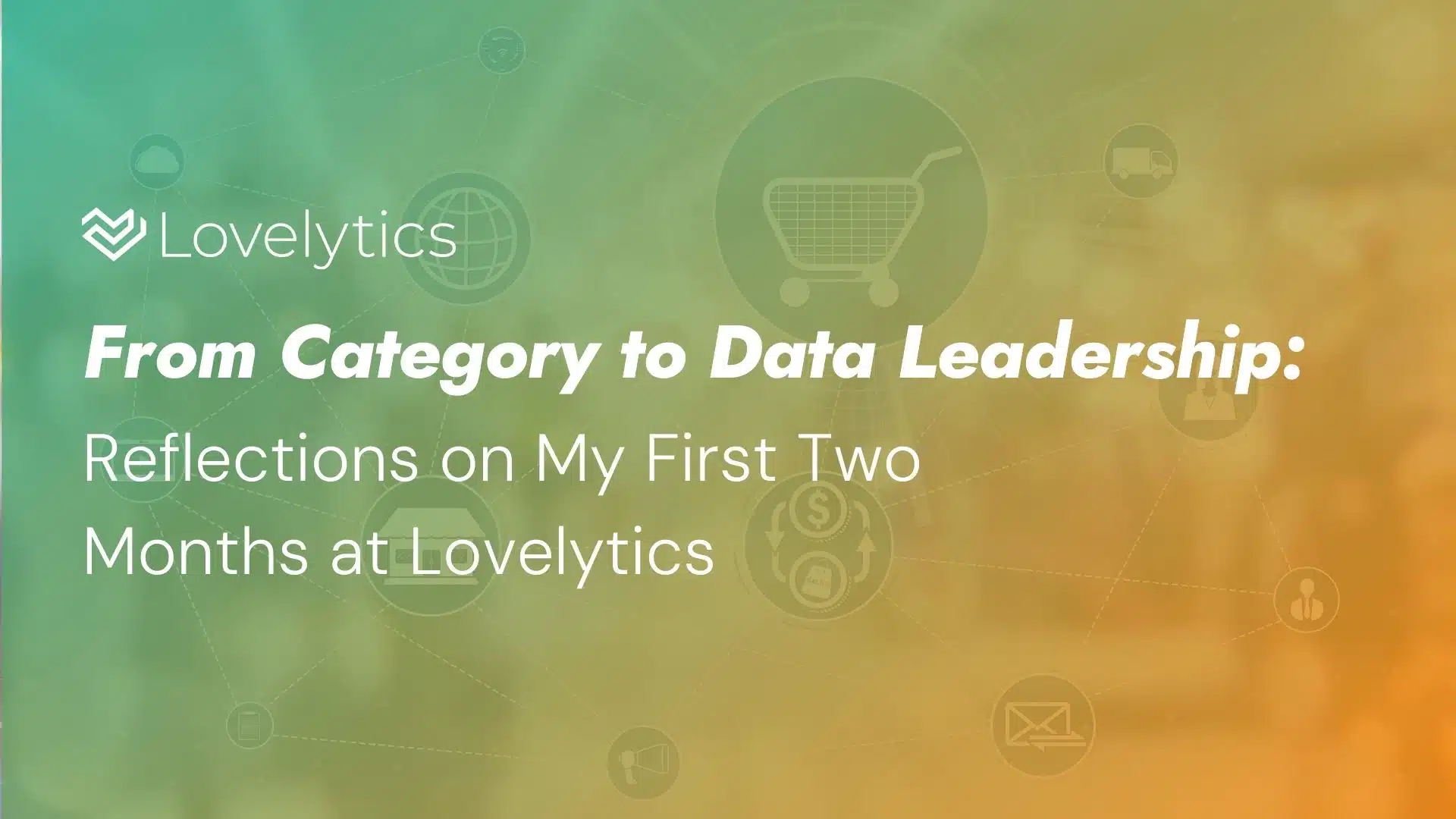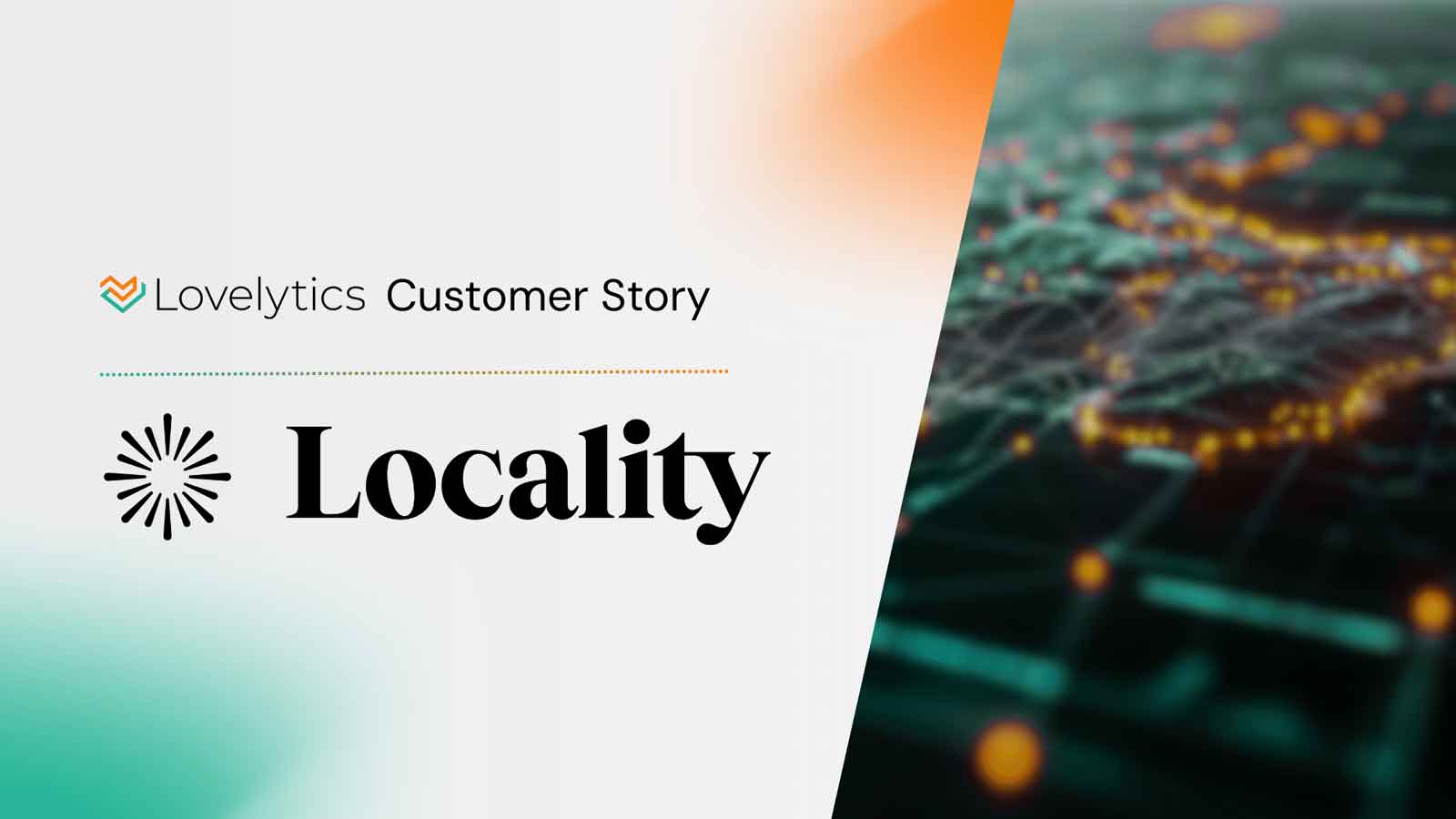Introduction
In the rapidly advancing field of artificial intelligence (AI), businesses are continuously seeking innovative ways to leverage AI technologies to gain a competitive edge. While individual AI components like Large Language Models (LLMs) have made significant strides, their true potential is realized when integrated into a cohesive system. Compound AI Systems enable this integration by combining LLMs, tools, APIs, software techniques, and architectural patterns to address complex and previously intractable business problems.
Whether you are a business executive aiming to unlock new value or a technical expert seeking to implement Compound AI solutions, this blog offers insights into harnessing the full potential of AI through strategic integration, leveraging the Databricks Data Intelligence Platform.
What is a Compound AI System?
A Compound AI System is an advanced artificial intelligence framework that integrates multiple AI components, LLMs, tools, APIs, software techniques, and architectural patterns into a cohesive whole. This integration enhances the capabilities of AI beyond what individual components can achieve in isolation, enabling the system to solve complex and previously intractable business problems.
Key Components of a Compound AI System:
- Large Language Models (LLMs):
- Utilize advanced language understanding and generation capabilities.
- Serve as the foundation for natural language processing tasks within the system.
- Tools and APIs:
- Incorporate specialized tools and application programming interfaces to extend functionality.
- Enable interaction with external systems, databases, and services for enriched data access and processing.
- Software Techniques:
- Employ advanced programming methods such as function calling within LLMs, context management, and prompt engineering.
- Facilitate efficient data handling, error management, and execution of complex operations.
- Architectural Patterns:
- Apply design patterns like microservices, event-driven architecture, and modular design.
- Ensure scalability, maintainability, and flexibility of the AI system.
The Venn diagrams below illustrates the transformative impact of Compound AI Systems-by expanding the domain of solvable business problems, Compound AI not only enhances what AI can do but also aligns it more closely with the strategic needs of your business.
Building Compound AI Systems by integrating LLMs effectively introduces human-like reasoning capabilities into software systems. While the question of whether LLMs truly “reason” is a subject of academic debate, for practical purposes, these models can exhibit “reasoning”-like abilities. This makes their integration particularly compelling, as it allows businesses to inject advanced reasoning and analytical capabilities into their workflows, enhancing problem-solving and decision-making processes. As a result, the domain of problems that can now be solved—which were previously deemed unsolvable—significantly increases.
For instance, Compound AI platforms that combine LLMs with real-time logistics data, weather insights, and geospatial information via third-party APIs are revolutionizing supply chain operations. These systems analyze complex datasets—such as shipment schedules, regional weather patterns, and geographic routing constraints—to predict demand fluctuations and optimize inventory levels, driving greater efficiency and reducing costs.
Implementing Compound AI Systems with Databricks Data Intelligence Platform
Before diving into the technology, it is essential to start with a clear business objective or use case. Identifying the specific business problem you aim to solve ensures that your Compound AI System is tailored to deliver tangible value and aligns with your organization’s strategic goals.
While building a Compound AI System can initially seem complex, the Databricks Data Intelligence Platform simplifies this endeavor by offering a unified environment for seamless data engineering, machine learning, LLM and AI integration. Below, we present some of the foundational components essential for constructing a Compound AI System on the Databricks platform. Depending on your specific use case and requirements, you can select and assemble the necessary components to architect a tailored solution that precisely addresses your business objectives.
Establish Data Foundation
Objective: Develop a robust groundwork with scalable and reliable data infrastructure.
- Utilize Delta Lake for Data Storage:
- Store structured and unstructured data in Delta Tables, ensuring ACID transactions and efficient metadata handling.
- Enable time travel and versioning for data, which is crucial for reproducibility and auditing.
- Implement Databricks Vector Database and Index:
- Generate vector embeddings of your data using pre-trained models or custom encoders.
- Index these embeddings in the Databricks Vector Database for fast similarity searches, essential for tasks like semantic search and Retrieval Augmented Generation (RAG).
- Use Hybrid search to combine the strengths of vector-based embedding search with traditional keyword-based search techniques.
A solid data foundation ensures your AI system is grounded in accurate, relevant data, enhancing the quality of insights and predictions.
Implement Retrieval Augmented Generation (RAG)
Objective: Enhance your LLM’s capabilities by integrating it with relevant data during inference.
- Connect LLMs to the Vector Database:
- Configure your LLM to query the vector database at runtime based on user inputs.
- Retrieve contextually relevant documents or data snippets to provide informed responses.
- Use libraries like LangChain to facilitate this integration.
- Enhance Response Accuracy:
- By supplying the LLM with up-to-date, domain-specific information, you improve the relevance and accuracy of generated outputs.
- Mitigate issues like hallucinations and outdated information typical in standalone LLMs.
RAG bridges the gap between static language models and dynamic, real-world data, making your AI responses more precise and context-aware. This bridges the gap between General Intelligence and Data (your data) Intelligence.
Integrate Foundation Models and External Models
Objective: Expand AI capabilities by leveraging powerful pre-trained models.
- Utilize Foundation Models:
- Integrate models like Meta Llama or Mistral for advanced language understanding.
- Incorporate External AI Models via APIs:
- Connect to external LLMs from OpenAI, Anthropic, Cohere and few others.
- Seamlessly integrate these services into your workflows to enhance functionality without building from scratch.
Combining foundation and external models allows you to tailor your AI system to specific business needs rapidly and cost-effectively.
Enable Function Calling and Tool Use within LLMs
Objective: Empower your LLMs to perform specific functions and interact with tools, enhancing interactivity and utility.
- Implement Function Calling Mechanisms:
- Enable your LLM to execute code snippets, access databases, or trigger APIs through function calls.
- Use libraries like LangChain to facilitate this integration.
- Integrate Essential Tools and Services:
- Connect your AI system to analytical tools, CRM systems, or other enterprise software.
- Allow the LLM to fetch real-time data, perform calculations, or update records based on user queries.
Enabling function calling transforms your LLM from a passive information provider to an active problem solver capable of executing tasks.
Develop Custom Machine Learning Models
Objective: Tailor AI capabilities to address specific challenges unique to your organization, using classic ML techniques.
- Train Custom Models with Proprietary Data:
- Use Databricks’ collaborative notebooks and ML workflows to develop models suited to your data.
- Focus on areas like predictive analytics, anomaly detection, or customer segmentation.
- Leverage MLflow for Experiment Tracking:
- Track experiments, manage model versions, and record parameters and metrics using MLflow.
- Ensure reproducibility and facilitate collaboration among data scientists.
Custom ML models provide an advantage by leveraging proprietary data to solve problems that can best be addressed by classic ML techniques.
Utilize Mosaic ML AI Gateway
Objective: Deploy your Compound AI System securely and at scale, ensuring high availability and performance.
- Configure the Mosaic ML AI Gateway:
- Set up the AI Gateway to handle API requests, load balancing, and authentication.
- Ensure secure communication between clients and your AI services.
- Optimize for Scalability:
- Use the gateway’s features to scale your AI services horizontally, handling increased load without performance degradation.
A robust deployment strategy ensures your AI system can grow with your business needs, providing reliable service to users.
Implement Lakehouse Monitoring
Objective: Maintain optimal performance and quickly identify and resolve issues within your AI system.
- Set Up Monitoring Dashboards:
- Use Databricks’ built-in monitoring tools to track key performance indicators like latency, throughput, and error rates.
- Visualize metrics in real-time to stay informed about system health.
- Define Alerts and Automated Responses:
- Configure alerts for critical thresholds or anomalies.
- Implement automated notifications to relevant teams for swift issue resolution.
Proactive monitoring minimizes downtime and ensures your AI system consistently delivers value to the business.
Build User Interfaces with Lakehouse Apps
Objective: Create intuitive interfaces for end-users to interact with your Compound AI System effectively.
- Develop Applications Using Lakehouse Apps:
- Build web applications, dashboards, or chatbots that provide access to your AI system’s capabilities.
- Native, secure applications that run directly on the Databricks instance.
- Integrate with Databricks Unity Catalog for access control and resource management.
- Focus on User Experience (UX):
- Design interfaces that are user-friendly and meet the needs of your target audience.
- Incorporate feedback mechanisms to continually improve the interface.
A well-designed user interface enhances adoption and satisfaction, maximizing the impact of your AI system on the organization.
Conclusion
By leveraging these building blocks, you can construct a powerful Compound AI System on the Databricks Data Intelligence Platform that addresses complex business challenges. Starting with a clear business objective ensures your efforts are focused and effective. By integrating robust data foundations, LLMs, custom AI models, functional capabilities, user interfaces, monitoring and governance, you create a comprehensive solution tailored to your organization’s needs. This strategic approach not only harnesses cutting-edge technology but also aligns AI initiatives with your business objectives, driving innovation and delivering tangible value.
At Lovelytics, we specialize in helping organizations like yours harness the full potential of Compound AI Systems. Our expertise in data analytics, machine learning, GenAI, and AI integration empowers your organization to tackle challenges that were once considered insurmountable, unlocking new opportunities for growth and efficiency. By partnering with us, your business stays ahead of the technological curve, gaining a significant competitive advantage in an ever-evolving marketplace.













